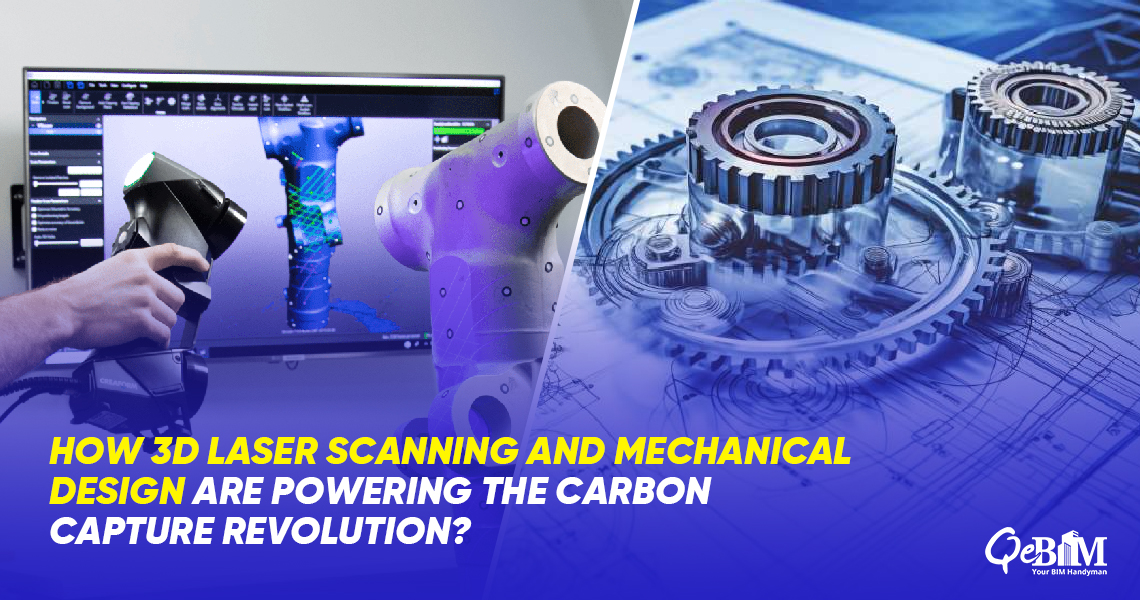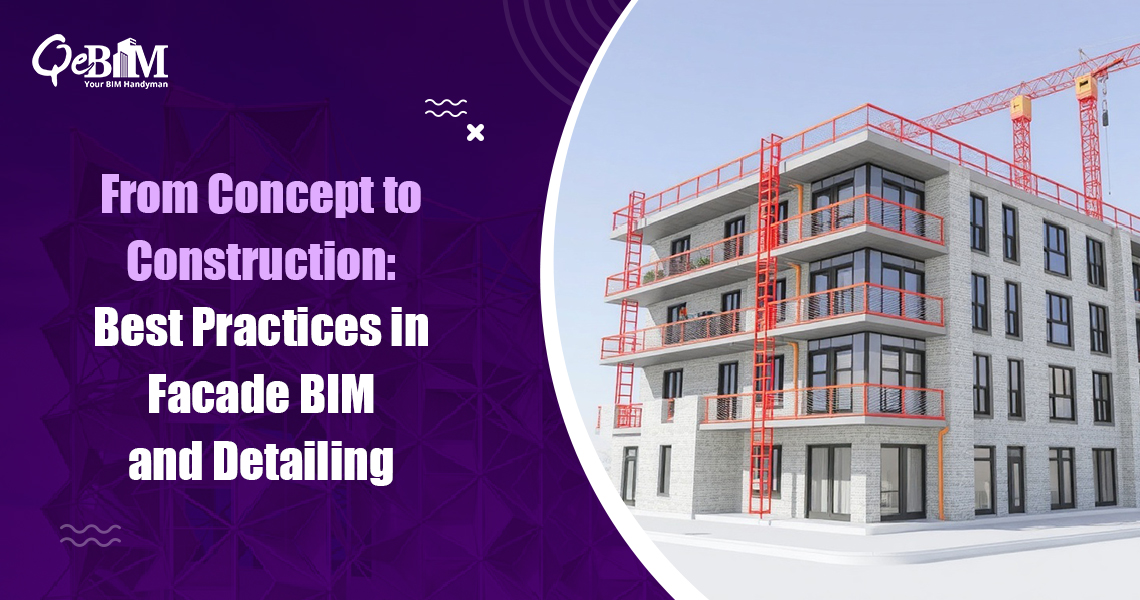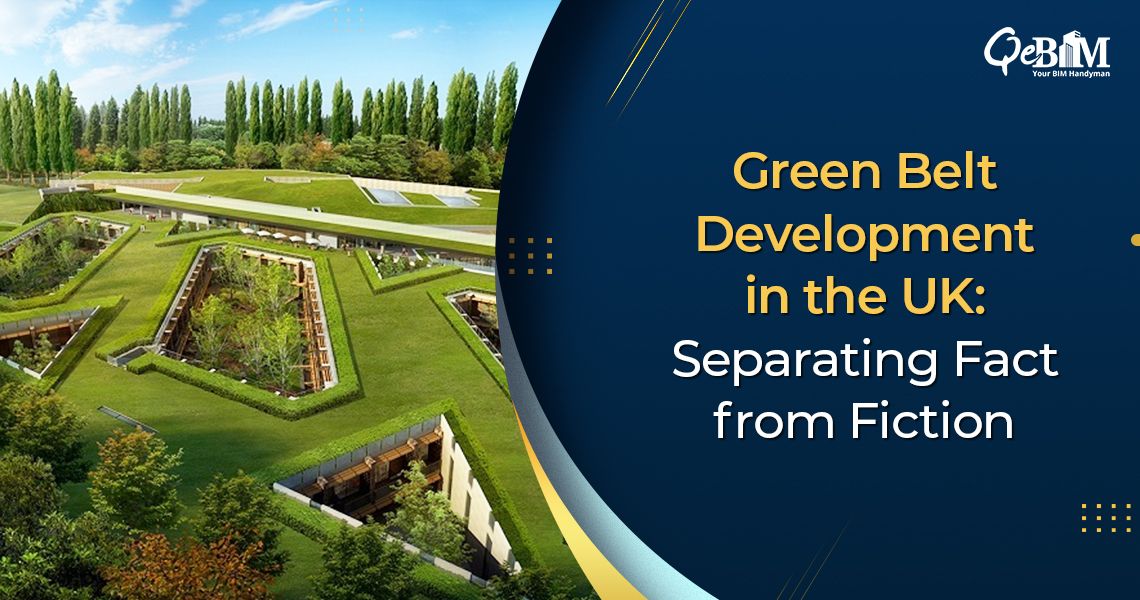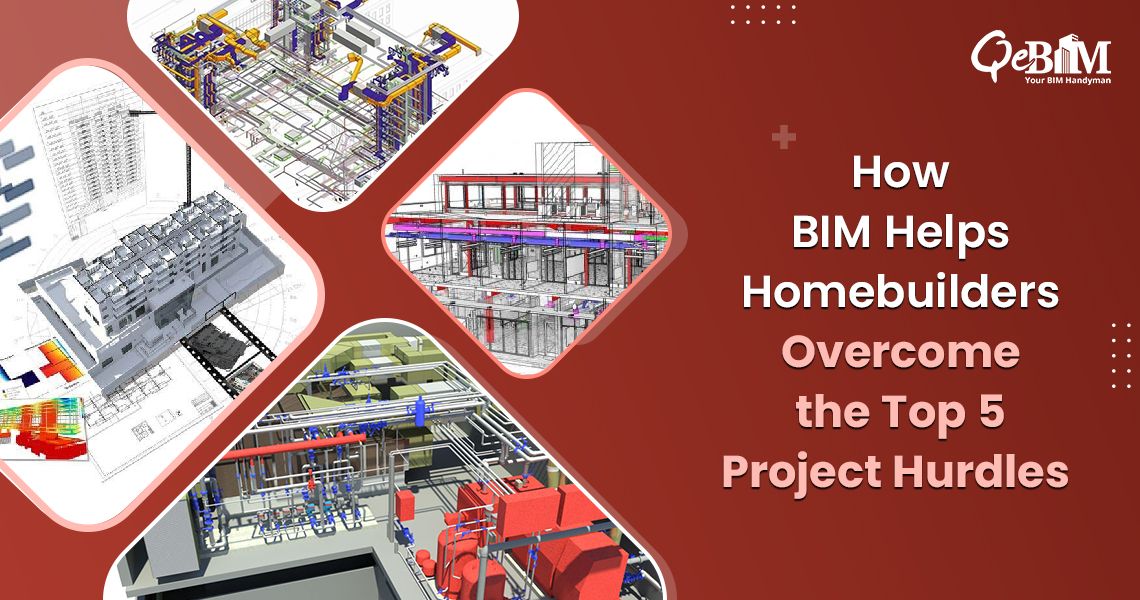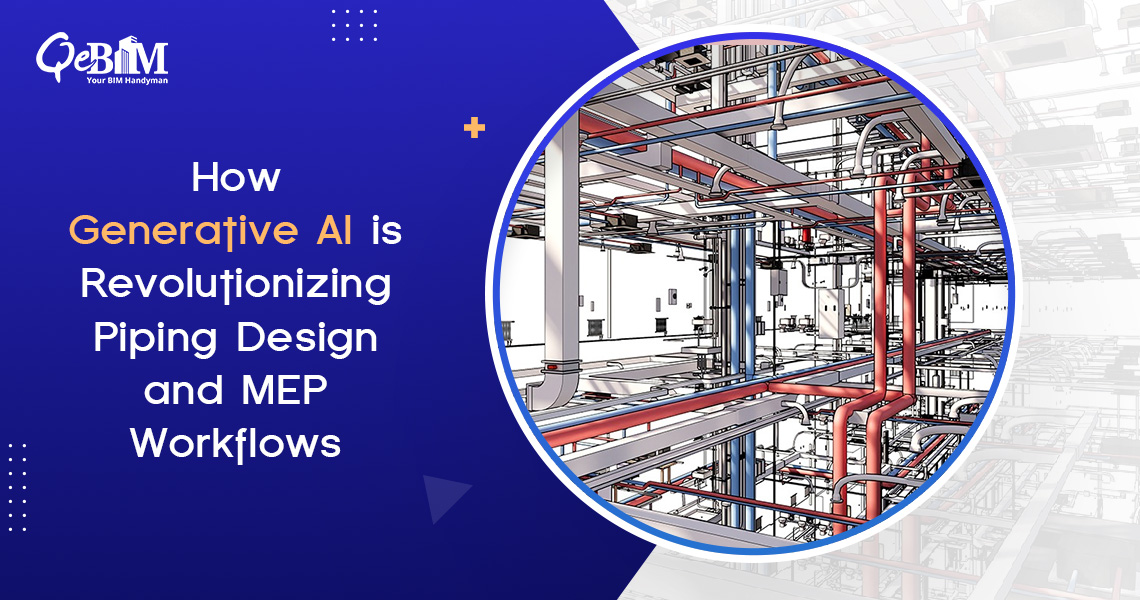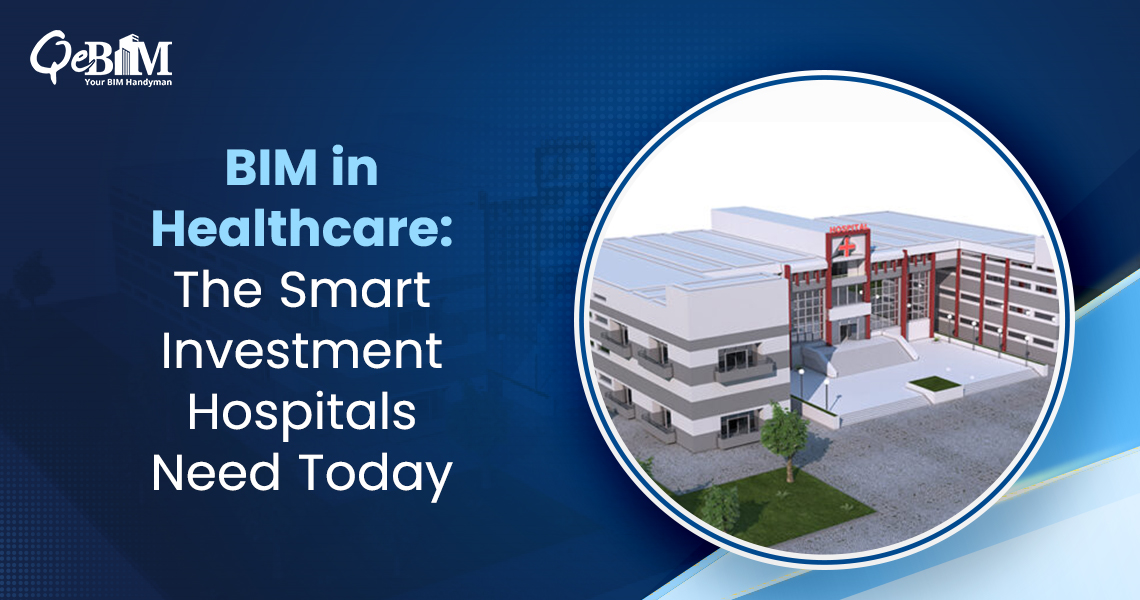Introduction
Carbon Capture, Utilization and Storage (CCUS) technologies are becoming a cornerstone in the global fight against the climatic change. According to the International Energy Agency (IEA), CCUS has the potential to capture over 7.6 billion tonnes of CO₂ annually by 2050, playing a critical role in limiting the global warming to 1.5°C.
But building the infrastructure needed for this massive shift is no small task. It demands precision, adaptability and even the speed which is made possible by cutting-edge tools like 3D laser scanning and mechanical design, both of which are revolutionizing how the carbon capture systems are conceptualized, developed as well as maintained.
This is where Scan to BIM services and the expertise of a professional BIM company plays an important role.
1) Capturing Reality: 3D Laser Scanning for Carbon Capture Sites
Before any design begins, a comprehensive understanding of the existing site conditions is quite critical. The 3D laser scanning offers unmatched accuracy, capturing up to 2 million points per second thereby providing a full 360° view of the site’s environment.
Fact:
A case study by Shell revealed that the 3D laser scanning helped to reduce the site’s survey time by 70% and design reworks by up to 40% during the development of its Quest Carbon Capture facility in Canada.
These scans are converted into the intelligent BIM models using the Scan to BIM services, allowing the engineers to visualize and analyze the real-world environment. This digital foundation is essential for integrating complex carbon capture units such as:
- Absorber towers
- Heat exchangers
- Flue gas compressors
- CO₂ pipelines and even the storage tanks
For both the greenfield and brownfield projects, 3D scanning did reduced the costly surprises and fasten up the early-stage planning to a greater extent.
2) Building Efficiency: Mechanical Design of Carbon Capture Systems
Designing CCUS systems isn’t just about connecting components—it’s about engineering for the extreme environments, safety and sustainability. Mechanical design teams uses the software like SolidWorks, AutoCAD Plant 3D and Revit MEP to:
- Model the pressure vessels and pipe networks
- Perform thermodynamic and stress analysis
- Optimize equipment layout and even the material selection
Fact:
According to a report by Global CCS Institute, over 50% of the capital expenditure in CCUS projects goes into the mechanical and structural components—highlighting the importance of the meticulous design.
Through integration with the BIM platforms, these designs are collaboratively refined, ensuring the compatibility with civil and structural systems. When backed by a proficient BIM Company, mechanical engineers benefits from:
- Fewer design clashes
- Real-time design iterations
- Streamlined procurement and fabrication
3) Supporting Sustainability and Lifecycle Management
Carbon capture systems are built to last 20–30 years but requires continuous maintenance and monitoring. BIM models derived from the Scan to BIM Services serves as the digital twins that facilitates:
- Predictive maintenances
- Emission tracking
- Retrofit planning
Fact:
Digital twins can reduce the unplanned downtime by up to 30% and maintenance costs by 10–20% as per Deloitte’s Smart Asset Management report.
With integrated sensor data, the BIM models can evolve into the performance dashboards thereby helping the operators to optimize the energy usage, detect the leaks and even meet the regulatory compliance.
4) Retrofitting Brownfield Facilities with Laser Precision
Retrofitting existing power plants, cement factories and industrial sites—where nearly 60% of new carbon capture capacity is expected to be added—is complex without any reliable as-built data. 3D laser scanning ensures:
- High-accuracy scans of the tight or congested spaces
- Seamless modeling of aged or an undocumented infrastructure
- Reduced risks of the design misfits and construction delays
Scan to BIM services bridges the gap between the old and new, helping to integrate the advanced mechanical systems without disrupting any ongoing operations. A skilled BIM company can model the MEP systems with millimeter precision and simulate the construction sequencing for the optimal execution.
Conclusion
As the world leans on the carbon capture to meet its net-zero goals, the 3D laser scanning and mechanical design are emerging as the unsung heroes of this movement. These technologies are streamlining how we build and maintain the CCUS facilities—with the increased accuracy, reduced costs and improved sustainability.
Partnering with the right BIM company and leveraging the advanced Scan to BIM services can significantly elevate the success and scalability of your carbon capture initiatives.
The journey to decarbonization is complex but with the right tools and expertise, it’s not just possible—it’s already happening.
Need support with BIM modelling or Scan to BIM for your next project?
Let our team at QeBIM help you bridge the gap between the engineering ambition and real-world execution.
